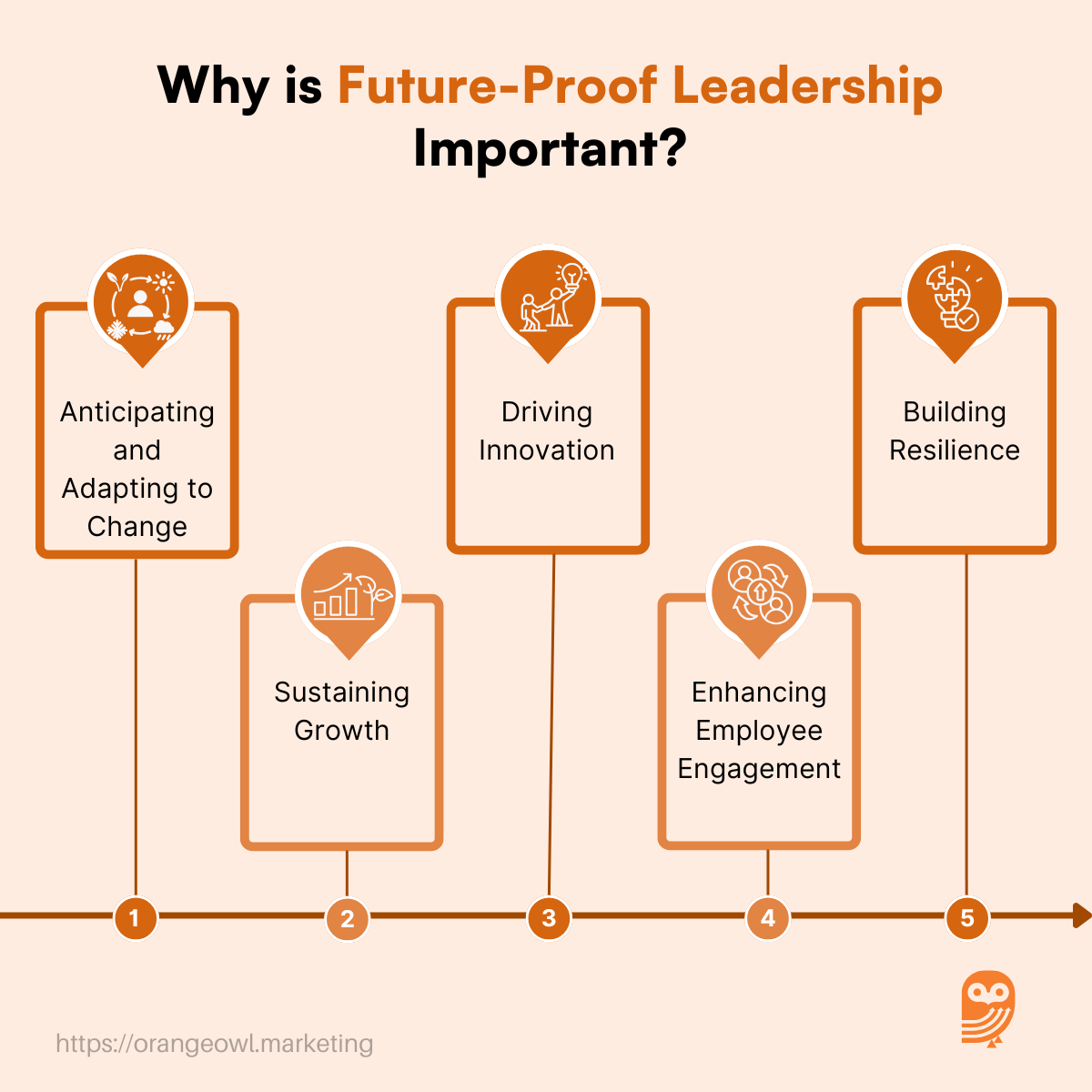Future-Proof Leadership: Preparing for Tomorrow’s Challenges
Vivek Goel
January 6, 2025

Table of Contents
Future-Proof Leadership: Preparing for Tomorrow’s Challenges
In today’s fast-paced world, where change is the only constant, leadership that merely reacts to the present is no longer enough. Future-proof leadership has emerged as a critical skill—one that anticipates trends, embraces innovation, and equips teams with the resilience and adaptability to thrive in a rapidly evolving business landscape.
This blog explores what future-proof leadership is, why it is essential, and how leaders can cultivate this approach to ensure lasting success for their organizations.
What is Future-Proof Leadership?
Future-proof leadership is the ability to foresee changes in the business environment and prepare teams to navigate those changes effectively. It involves staying ahead of industry trends, leveraging emerging technologies, and fostering a culture of continuous learning and agility.
For example:
- In the retail industry, leaders who adopted e-commerce early were able to pivot successfully during the pandemic, ensuring business continuity.
- In healthcare, leaders who invested in telemedicine technology before it became mainstream provided uninterrupted patient care when in-person consultations were limited.
- In the tech industry, companies with future-proof leaders have embraced AI and machine learning to maintain a competitive edge, staying ahead in innovation and efficiency.
Why is Future-Proof Leadership Important?
- Anticipating and Adapting to Change: Future-proof leaders help organizations remain agile by preparing for disruptions such as technological advancements, market shifts, or global crises.
- Driving Innovation: These leaders encourage a forward-thinking mindset, ensuring the organization stays relevant and competitive.
- Building Resilience: By fostering a culture of adaptability, future-proof leaders create teams that can weather uncertainties with confidence.
- Sustaining Growth: Anticipating future needs ensures steady progress, enabling organizations to capitalize on emerging opportunities.
- Enhancing Employee Engagement: Leaders who invest in upskilling their teams and provide clarity about the future build trust and loyalty among employees.

How to Build Future-Proof Leadership
Future-proof leadership isn’t about waiting for change to happen—it’s about proactively shaping the future. Let’s explore each key element in detail, with practical examples from B2B companies, to understand how to build and implement this leadership approach.
1. Embrace Continuous Learning
What It Means: Future-proof leaders must stay updated on industry trends, market shifts, and emerging technologies. They should encourage their teams to adopt a mindset of lifelong learning.
Example:
A SaaS company specializing in customer relationship management (CRM) tools noticed the rise of AI in their industry. The leadership team proactively upskilled themselves and their teams by organizing workshops on AI integration. They also collaborated with universities for joint research initiatives. This preparation enabled them to launch AI-powered features ahead of competitors, ensuring they stayed relevant in a rapidly evolving market.
2. Foster Agility
What It Means: Agility involves creating flexible structures and processes that allow teams to pivot quickly in response to external changes or disruptions.
Example:
A B2B logistics company faced significant supply chain disruptions during the pandemic. Leaders implemented a cross-functional task force that could respond to issues in real time. By decentralizing decision-making and empowering regional managers to act swiftly, they minimized delays and developed new partnerships with local suppliers. Their ability to adapt quickly ensured continuity and customer satisfaction during a global crisis.
3. Cultivate a Growth Mindset
What It Means: Future-proof leaders encourage a culture where innovation and experimentation are valued, and failures are seen as learning opportunities rather than setbacks.
Example:
A cybersecurity firm wanted to innovate their product offerings but faced internal hesitancy toward experimenting with new models. The leadership team addressed this by introducing an “innovation lab” where employees were encouraged to prototype ideas without fear of failure. One such experiment led to the development of a groundbreaking threat detection system, which became a significant revenue driver for the company.
4. Leverage Data
What It Means: Using predictive analytics and data insights, leaders can identify opportunities, forecast challenges, and make informed decisions.
Example:
A B2B e-commerce platform utilized predictive analytics to identify seasonal purchasing trends among its clients. Leadership used these insights to adjust marketing efforts, optimize inventory, and create personalized offers. By leveraging data, they not only improved operational efficiency but also increased customer retention and sales during peak seasons.
5. Invest in Technology
What It Means: Equipping the organization with the right tools and platforms ensures scalability, efficiency, and the ability to meet future demands.
Example:
A B2B marketing agency invested in advanced marketing automation tools to streamline workflows and improve client campaign performance. The leadership team also encouraged employees to become certified in using these tools. This investment in technology helped the agency reduce turnaround times for campaigns and deliver highly targeted marketing strategies, attracting new clients and increasing revenue.
6. Prioritize People
What It Means: Employees are at the heart of any organization’s success. Future-proof leaders invest in their teams by providing training, fostering well-being, and ensuring alignment with organizational goals.
Example:
A consulting firm noticed increased burnout among its employees due to long hours and remote work challenges. The leadership team responded by implementing flexible work schedules, mental health support programs, and skill development opportunities. These initiatives not only improved employee morale but also enhanced overall productivity, making the company more resilient in the face of talent shortages.
Challenges and Pitfalls
While building future-proof leadership is vital, it comes with its own set of challenges:
- Resistance to Change: Employees or leaders who are reluctant to adopt new methods can slow progress.
- Over-Reliance on Trends: Chasing every trend without aligning with organizational goals can dilute focus and resources.
- Lack of Vision: Failing to define a clear roadmap for the future can lead to uncertainty and confusion.
- Inadequate Investment: Underestimating the need for training and technology upgrades can hinder progress.
Best Practices for Future-Proof Leadership
- Visionary Thinking: Clearly articulate a vision for the future that aligns with organizational goals.
- Inclusive Decision-Making: Involve diverse perspectives to create robust strategies.
- Scenario Planning: Anticipate potential future scenarios and create contingency plans.
- Empathy-Driven Leadership: Understand the fears and concerns of your team and guide them through change with clarity and compassion.
- Regular Feedback Loops: Continuously assess and refine strategies based on real-time insights.
Key Takeaways
Future-proof leadership is not a one-time achievement—it’s an ongoing process of learning, adapting, and evolving. By embracing a forward-thinking mindset, leveraging technology, and empowering teams, leaders can ensure their organizations remain resilient and competitive in the face of change.
At its core, future-proof leadership is about turning uncertainty into opportunity, equipping not just the organization but also its people to thrive in the challenges of tomorrow.
For those interested in cultivating this leadership style, remember: the future belongs to those who prepare for it today.


